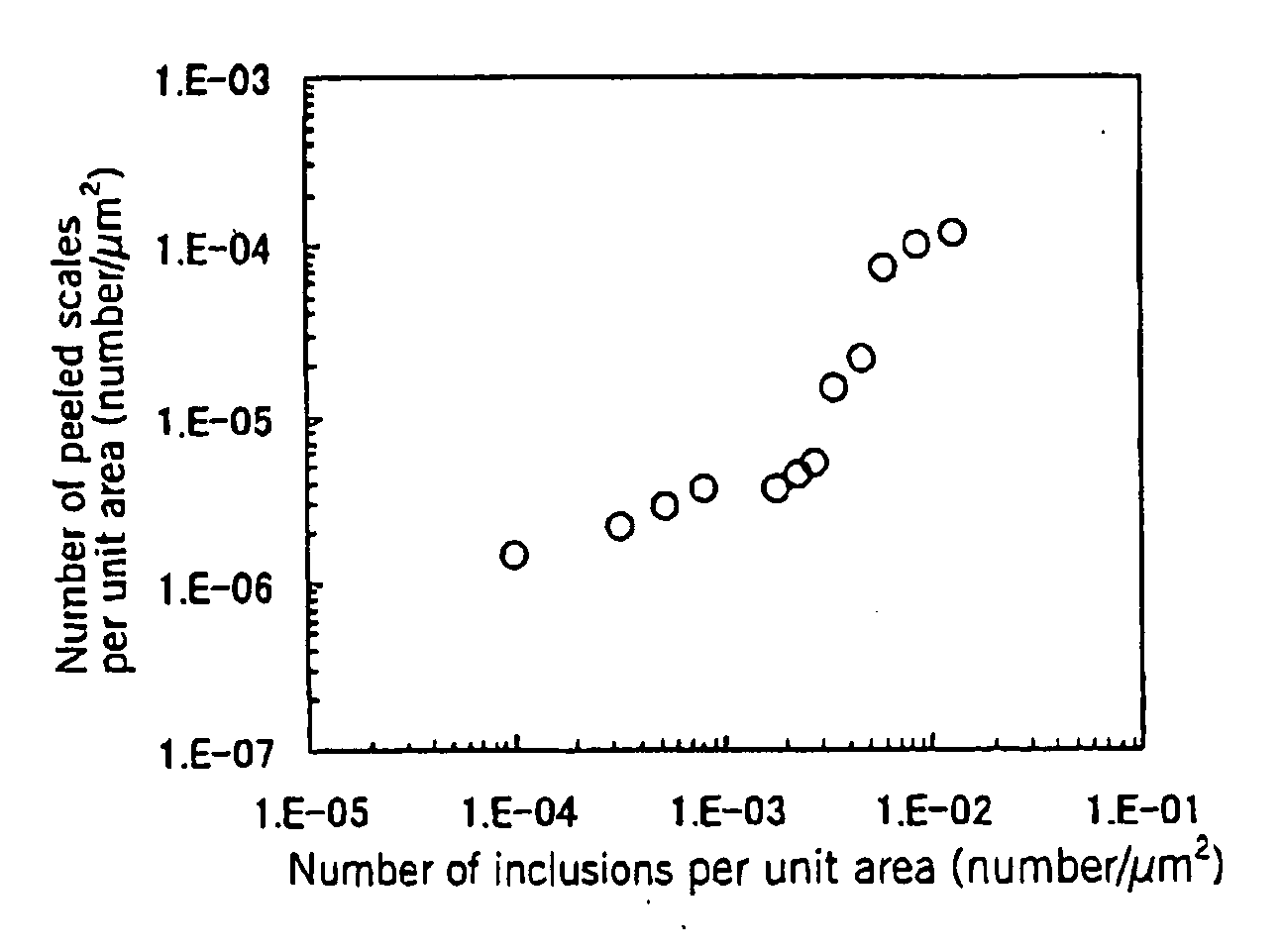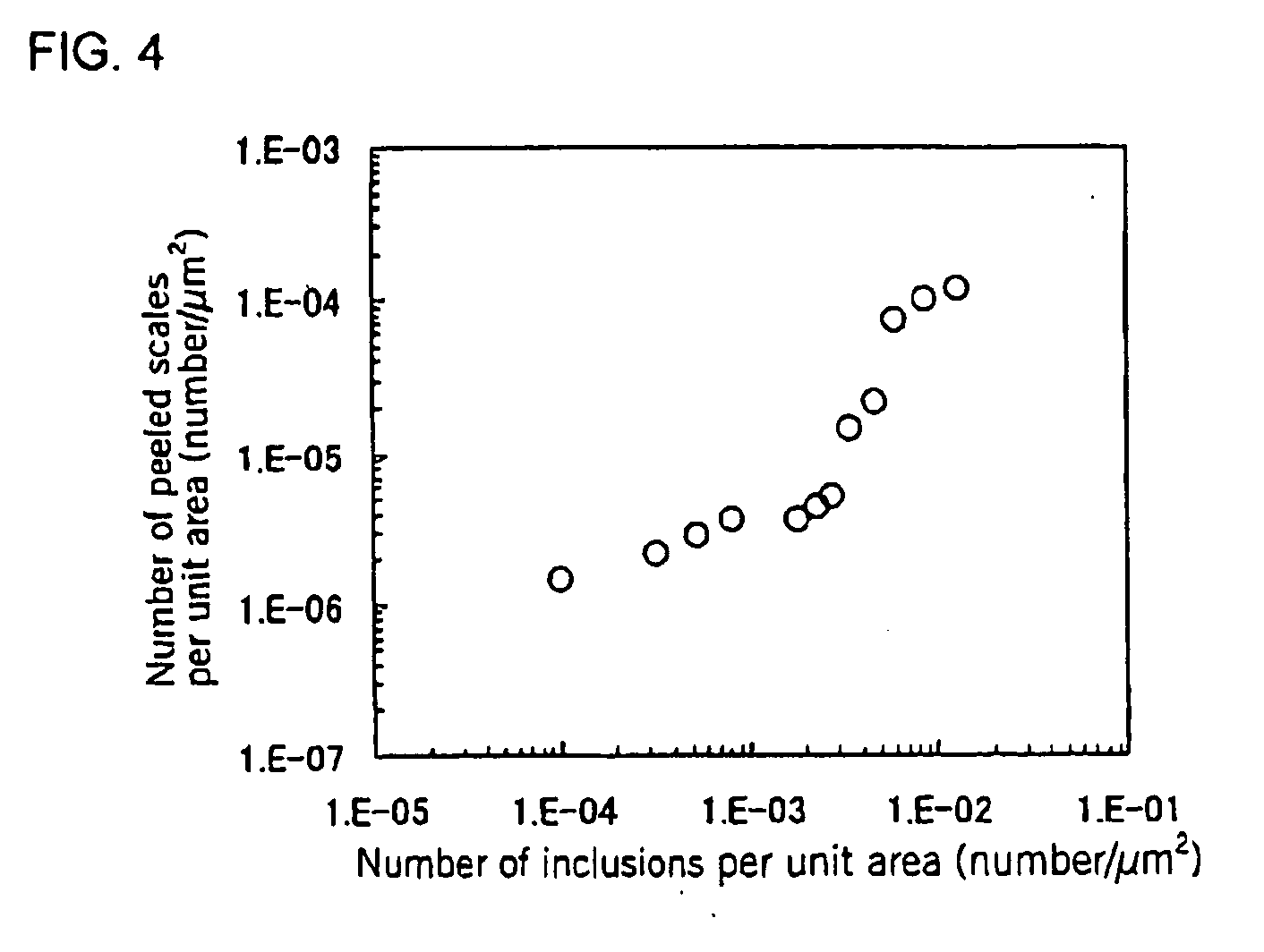Austenitic stainless steel
a technology of stainless steel and stainless steel, applied in the field ofaustenitic stainless steel, can solve the problems of scale peeling off, distributed generation is subjected to cyclic heating and cooling, and produces a severely corrosive environment, and achieves the effects of suppressing gas dissociation, high purity of cr, and suppressing the advance of corrosion
- Summary
- Abstract
- Description
- Claims
- Application Information
AI Technical Summary
Benefits of technology
Problems solved by technology
Method used
Image
Examples
examples
[0110] The present invention will be explained in further detail while referring to examples. The following examples are for the purpose of illustration and do not limit the present invention,
[0111] 10 kg of each of the steels of Run Nos. 1-36 having the steel compositions shown in Table 1 (Run Nos. 1-32 were in the range of the present invention, and Run Nos. 33-36 were outside the range of the present invention) were melted in a vacuum induction heating furnace. In order to vary the number of inclusions, the steel of Run No. 17 underwent deoxidation at the time of refining under two different conditions (17a and 17b).
TABLE 1RunChemical composition of steel (mass %) [balance: Fe and impurities]No.CSiMnCuCrNiAlNPSY and Ln-series (REM)Others10.040.440.450.425.817.20.070.180.0210.002La: 0.02, Nd: 0.01—20.060.680.050.125.518.50.050.180.0220.001Ce: 0.04—30.071.560.870.526.119.10.050.160.0180.001Y: 0.02—40.030.870.640.626.219.40.080.020.0190.001Y: 0.01, Pr: 0.01Nb: 0.250.030.130.870.6...
PUM
| Property | Measurement | Unit |
|---|---|---|
| Fraction | aaaaa | aaaaa |
| Fraction | aaaaa | aaaaa |
| Fraction | aaaaa | aaaaa |
Abstract
Description
Claims
Application Information
 Login to View More
Login to View More - R&D
- Intellectual Property
- Life Sciences
- Materials
- Tech Scout
- Unparalleled Data Quality
- Higher Quality Content
- 60% Fewer Hallucinations
Browse by: Latest US Patents, China's latest patents, Technical Efficacy Thesaurus, Application Domain, Technology Topic, Popular Technical Reports.
© 2025 PatSnap. All rights reserved.Legal|Privacy policy|Modern Slavery Act Transparency Statement|Sitemap|About US| Contact US: help@patsnap.com



